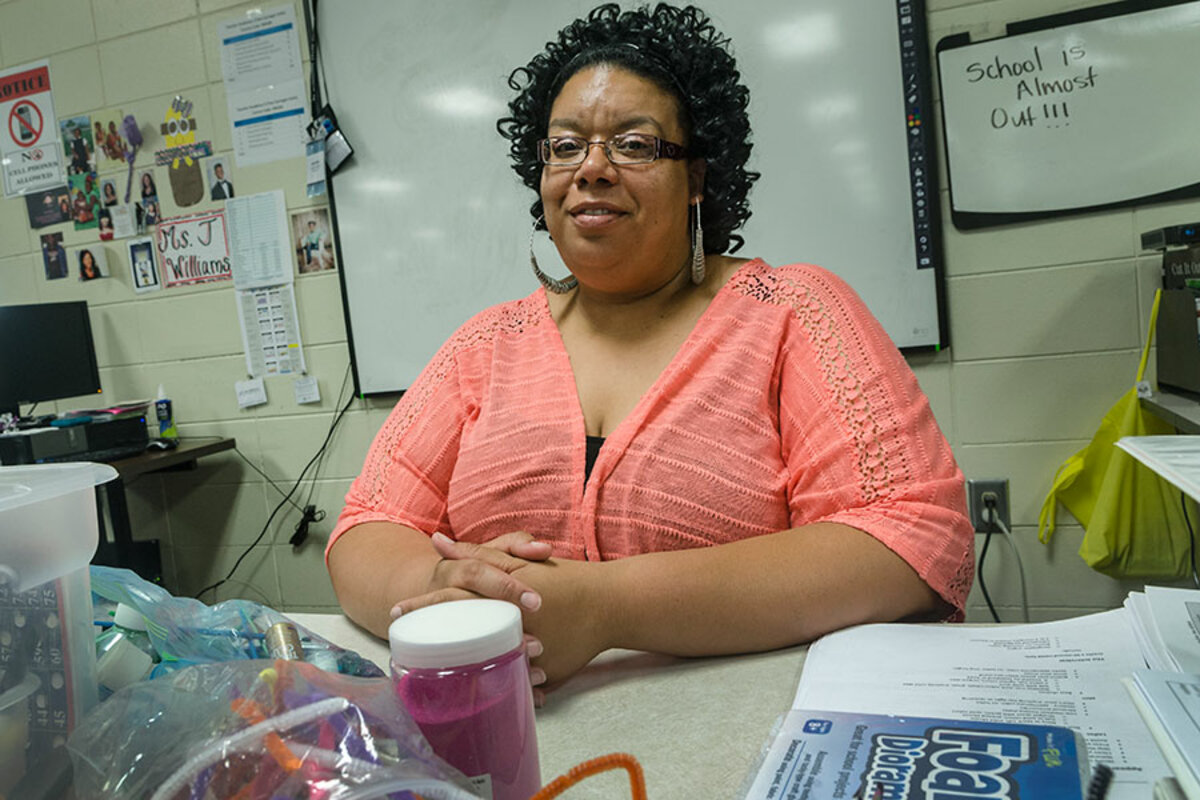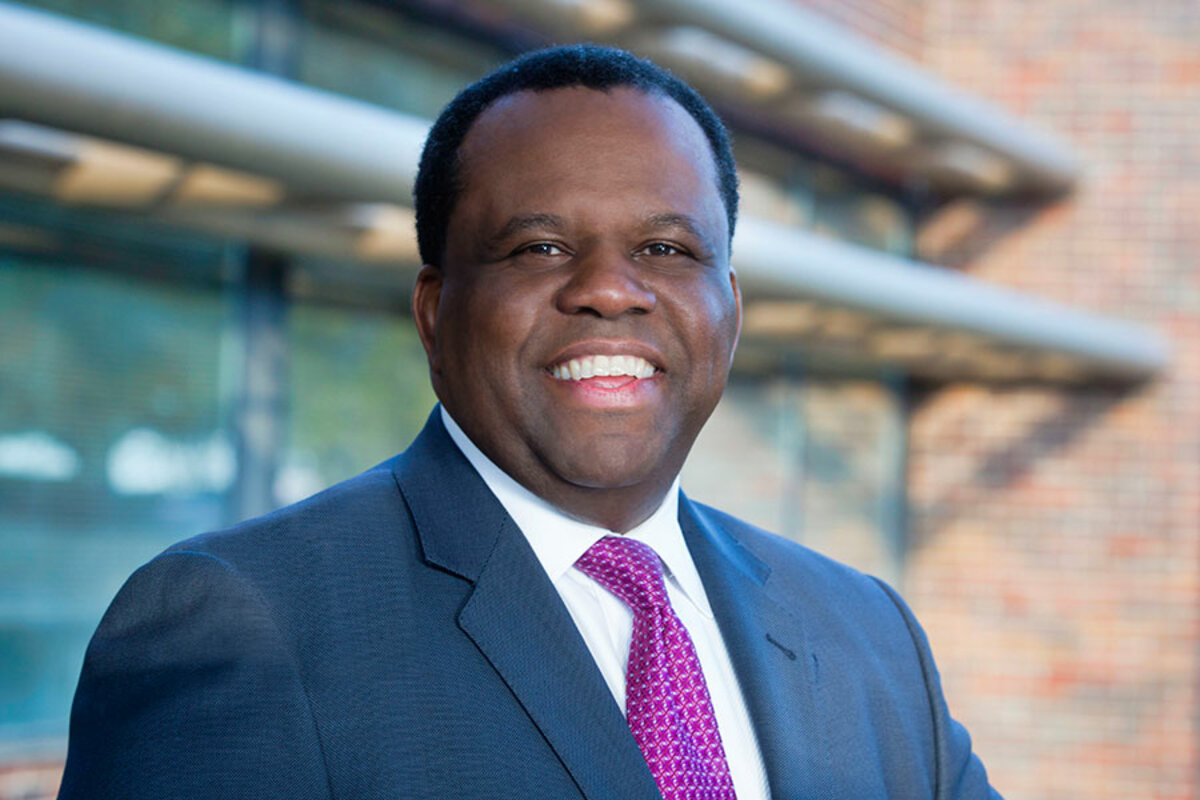Payday loans a scourge, but still a need
Loading...
| Clarksdale, Miss.
At a highway junction outside town, a trio of outsized blue guitars mounted on a telegraph pole face onto the fertile farmlands of the Mississippi Delta. In blues mythology, this crossroads is The Crossroads, where guitarist Robert Johnson traded his soul to the devil for musical genius. Today it’s a stoplight on Highway 61, a sun-baked strip of discount malls, gas stations, fast-food joints – and half dozen stores offering fast cash..
For Jennifer Williams, a high-school teacher, it’s a strip of debt and shame and heartache. For years, she would spend every payday going store to store, trying to keep up repayments, all the while slipping deeper into debt. At one point she owed thousands of dollars to nine payday loan stores in three towns.
“Those places are the devil. Once you get wrapped into it, it’s hard to get out,” she says.
Stories like hers have shone a harsh spotlight on an ecosystem of alternative finance that affluent bank customers rarely see. In majority-black towns like Clarksdale, however, where 1 in 3 live below the poverty line, they are the only form of “banking” some residents ever know.
There is broad consensus that payday lending is an imperfect and sometimes predatory solution to a difficult problem – the millions of Americans with impaired credit or no credit history at all. The question is how to improve or replace it.
Fourteen states and the District of Columbia already prohibit payday lending, including Arkansas, which is just across the Mississippi River from Clarksdale and shut down its last neon-lit loan store in 2009. Other states put limits on payday loan terms so that fewer consumers end up in default.
Now, the federal government is stepping in. In June, the Consumer Financial Protection Bureau rolled out landmark regulations designed to protect customers from abusive practices. Once finalized, they would likely take effect by 2018.
The payday industry accuses the CFPB of overreach and says its punitive rulebook would put many smaller lenders out of business and cut off short-term credit to consumers.
Community bankers, credit unions, nonprofits, and tech entrepreneurs are all racing to develop affordable loans that also provide a path out of subprime status. But for now, payday stores may be the only real option for America’s working poor when emergency strikes – a burst tire, a medical bill – and there’s no cash in the kitty. And that suggests households could be better off with access to high-cost credit, at least until something better comes along.
“As bleak as the [payday debt] numbers are, some people pay it off immediately. They fix their car, and pay it off after the next paycheck. Banning it is such a blunt regulatory instrument. It cuts off bad uses of the credit, but also the good ones,” says Jim Hawkins, an associate professor at the University of Houston Law Center.
From a $100 loan to a $4,000 debt
Ms. Williams got her first payday loan in 2006. She had recently started teaching and money was tight; her boyfriend was out of work and the bills were piling up, so she borrowed $100 against her next paycheck. Credit cards were out because she had defaulted at college. Next time she ran short, she borrowed more, and when she couldn’t repay it she went to another payday store, then another. By 2009, she owed more than $4,000 and was underwater.
“It takes a toll on you, mentally,” she says.
Payday borrowers range from salaried government employees to fast-food workers. What they have in common is that they run short of cash, whether for utilities or rent, or an emergency, and are prepared to sign over access to their checking account.
A typical two-week loan of $300 costs $50 in fees, equivalent to 400 percent annualized. It’s not the only way that America’s poor pay more for financial services. Take check cashiers, which charge a 1 to 5 percent fee. For a worker with a $22,000 salary, it adds up to $1,000 a year, more than 10 times the average for using a checking account, according to the White House’s Council of Economic Advisers.
While 93 percent of households had bank accounts in 2013, 1 in 5 also used alternative finance like payday lenders and pawn brokers.
“A lot of people are afraid to go into banks. Their parents didn’t use banks, and they’ve never gone there to see how the process works,” says Charles Lee, an attorney at the Mississippi Center for Justice in Jackson.
After her son was born in 2011, Williams tried to sort out her finances. Her boyfriend was working, but the payday debt never cleared, even after applying tax refunds. Two years ago, she saw a flyer for a five-week financial boot camp in Clarksdale sponsored by Southern Bancorp, a community bank based in Little Rock, Ark., and decided to go. The part-time class showed her how to budget prudently and rebuild her credit, and on completion she qualified for an affordable loan to refinance her debt, along with a savings account.
Today she is careful with bills and loan repayments, and steers clear of Highway 61’s loan stores. Still, she worries about the job security of her boyfriend, who works as a regional manager – at a national payday chain. “I know, I know,” she says, grimacing at the irony.
Charlestien Harris, a credit counselor at Southern Bancorp who helped Williams, says her story is common in that there was no single emergency that pushed her into a debt spiral, just an accumulation of bad decisions in hard times.
“It’s a way of life for some people. It’s their backup plan,” she says.
Dennis Shaul, CEO of the Community Finance Services Association, which represents payday lenders, concedes that some repeat borrowers do get into trouble and would be better off with longer-term loans that can be repaid over time. But he says the CFPB’s rules are based on a misperception of the risks to consumers.
Far from being a money machine, he says profit margins at payday stores are low. “This is a very inefficient way of loaning money,” he says.
More payday stores than McDonald’s
Nationally, payday lenders outnumber McDonalds, with roughly 16,000 stores. Per capita, Mississippi has the most, along with the highest poverty rate in the nation. That deprivation cuts deep in Delta towns like Clarksdale.
In neighboring Arkansas, payday lending traced a decade-long arc that ended in 2009 in prohibition. That makes Arkansas, another poor state, something of a test case for studying the pros and cons of high-cost, short-term credit.
In West Helena, Ark., Vance Kalb’s pawn and gun store sits on a gritty block with three other pawn stores – and no payday stores. A chunky white man with a shaved head, goatee, and cornflower-blue eyes, Mr. Kalb says the rise and fall of payday lending in Arkansas didn’t affect his business.
After 26 years in business, he has a keen sense of who has the wherewithal to repay loans and recover their jewelry, guns, and laptops. “Giving Up Is Not An Option,” reads a poster over his gun display cabinet. Unlike payday lenders, pawnshops – some 12,000 nationwide – offer loans without recourse; what is pawned is what the store gets if the recipient of the loan defaults.
Kalb describes his customers as impulse buyers who wouldn’t think of going to the bank for a loan.
“I’m their buyer. I’m their broker. I’m the guy who keeps them from going to jail for a speeding ticket. They’re good people. But they’re high risk,” he says.
Academic studies have found mixed evidence of benefits in states that ban payday lending.
For instance, a 2010 University of Chicago study found that access to payday loans mitigated the financial impact of natural disasters. The study looked at foreclosure rates on properties in California affected by disasters; foreclosure rates were lower in areas where high-interest credit was available.
But in a survey by Southern Bancorp of former payday customers in Arkansas, 59 percent said their lives had improved since lending stopped. Only 12 percent said that it had worsened their financial situation. However, those surveyed were borrowers who had filed complaints over their loans, not a broad sample of payday customers.
A separate 2013 survey found that counties in Arkansas adjacent to neighboring states reported much higher numbers of non-bank loans than counties in central Arkansas, showing that residents had crossed state lines to borrow.
“By shutting down the storefronts we didn’t change the need,” says Darrin Williams, CEO of Southern Bancorp.
Innovative ideas
Funneling credit to high-risk borrowers doesn’t top Wall Street’s to-do list. Instead it falls to lenders like Southern Bancorp, which was set up in 1986 with support from then Arkansas Gov. Bill Clinton. Mr. Williams, the CEO, says the onus is on mission-driven lenders to innovate.
“For a significant section of our population, capitalism is not working.”
Earlier this year, Williams launched a pilot project that allows bank employees to take out a loan of up to $1,000 for up to a year, with an interest rate of 16.99 percent, a fraction of the cost of storefront loans.
Williams wants to take this product to large employers in the Delta. The bank would report the loan to credit bureaus so borrowers can build higher credit scores.
“These loans don’t generate a lot of margin, but they do go a long way to helping [borrowers] move up the economic opportunity ladder,” he says.
Here’s the rub: Williams isn’t sure if the CFPB’s complex regulations would undo his innovation. “I don’t think we are the target of these regulations. I think there are unintended consequences,” he says.
Some employers and start-ups are experimenting with ways to advance money to workers or, in the case of ride-sharing companies Uber and Lyft, move to same-day payments, The New York Times reported in July. One start-up, PayActiv in San Jose, Calif., charges $5 per advance to employees based on their earnings, then recoups the money from the employer on payday.
James Gutierrez, a Silicon Valley entrepreneur, sees technology as a tool to making small-dollar loans affordable. His start-up, Insikt, works with retailers and banks to extend credit to their customers using data analytics. On a $1,000 loan, a borrower will repay $1,260 over 12 months.
“For me, impact equals scale. I want to figure out how we can help millions.”
In fact, he already did that for Hispanic households with his previous venture, Progreso Financiero. Starting in 2005, it lent small amounts to borrowers with little or no credit history, opening booths in supermarkets in California, Texas, and Illinois to find customers and translating all the documentation into Spanish.
“It was really important to make it transparent and easy to understand,” says Gutierrez.
Since 2005, the lender, since renamed Oportun, has made more than 1.4 million loans and has been profitable for the past three years, according to a recent security filing. Gutierrez left the company in 2012 but remains a major shareholder.
He welcomes the CFPB’s regulations and the prospect that fewer borrowers will take out payday loans.
“When that product goes away you still have a lot of poor and low-income people who are aspirational and have nowhere to go…. It’s a great opportunity to scale up responsible lending.”








